NanoAntennoy : Novel Technology Makes Production Of Flat Optics A Reality
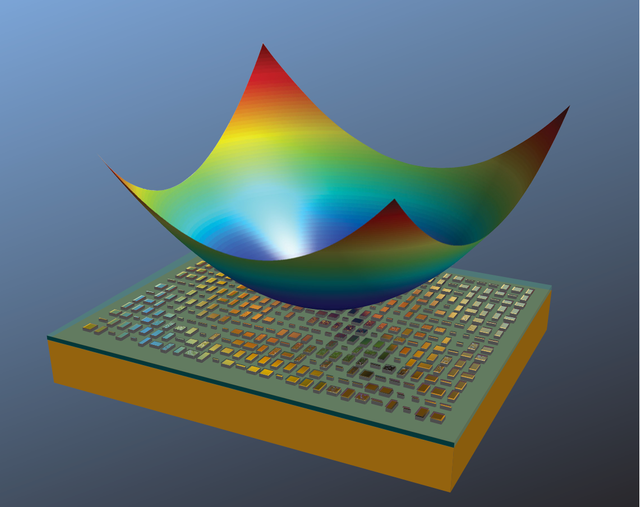
Nanoantennoy today is often called an alternative device for converting the energy of solar radiation into electric current, but other applications are possible, and this will also be described here. This device works, like many antennas, on the principle of rectification, but unlike traditional antennas, it works in the optical wavelength range.
Electromagnetic waves in the optical range are extremely short, but back in 1972, Robert Bailey and James Fletcher proposed this idea, already then they considered the prospect of collecting solar energy in the same way as it is done with radio waves.

Due to the short wavelength of the optical band, the nano-antenna has dimensions not exceeding hundreds of microns in length (in proportion to the wavelength), and in width - no more, or even less, 100 nanometers. For example, nano-antennas in the form of dipoles from nanotubes, for operation at frequencies of hundreds of gigahertz, refer specifically to such antennas.
About 85% of the solar spectrum consists of waves with a length of 0.4 to 1.6 μm, and they have more energy than infrared. In 2002, the Idaho National Laboratory conducted extensive research, and even built and tested nano-antennas for wavelengths ranging from 3 to 15 microns, which corresponds to a photon energy of 0.08 to 0.4 eV.
In principle, it is possible to absorb light from any wave of a wave with the aid of nano antennas, provided that the size of the antenna is optimized accordingly. So, since 1973 and to this day, studies in the development of this direction have been ongoing.
In theory, everything is simple. The light incident on the antenna, oscillating its electric field causes oscillations of electrons in the antenna with the same frequency as the frequency of the wave. After detecting the current with a rectifier, it is enough to convert it, and it is possible to supply power to supply the load.
The theory of microwave antennas says that the physical dimensions of the antenna should correspond to the resonance frequency, however, quantum effects make adjustments, for example the skin effect at high frequencies is very pronounced.
At frequencies of 190-750 Terahertz (wavelength from 0.4 to 1.6 μm), alternative diodes close to the tunnel diodes based on metal-insulator-metal are needed, the conventional ones will not work, since there will be huge losses due to the action of parasitic capacitances. With successful implementation, nanoantennes significantly outperform popular solar panels now, but the problem with detection remains the main one.
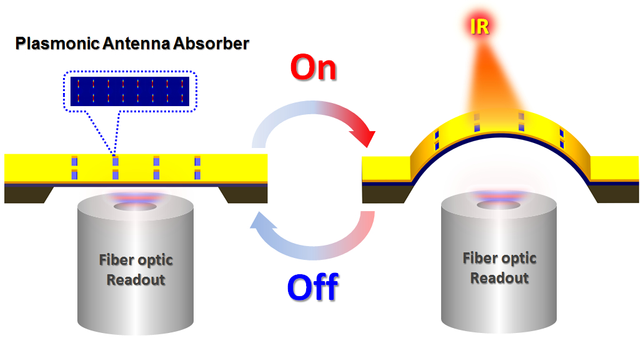
In 2011, a group of physicists from the University of Rice developed a nano-antenna for converting to near-infrared radiation. Samples were a set of resonators made of gold, located in an array at a distance of 250 nm from each other.
The dimensions of the resonator were 50 nm in width, 30 nm in height, and the length varied from 110 to 158 nm. The head of the research team, Naomi Galas, explained in the published article that the differences in lengths correspond to the differences in operating frequencies.
On the silicon layer there were gold elements, and the contact point was just the Schottky barrier. The array of resonators was enclosed in a layer of silicon dioxide, and the contacts were formed by a layer of indium-tin oxide.
Thus, when light fell onto the resonators, surface plasmons were excited-the electrons oscillated near the surface of the conductor, and when the plasmon disintegrated, then energy was released, which was then transmitted to the electrons.
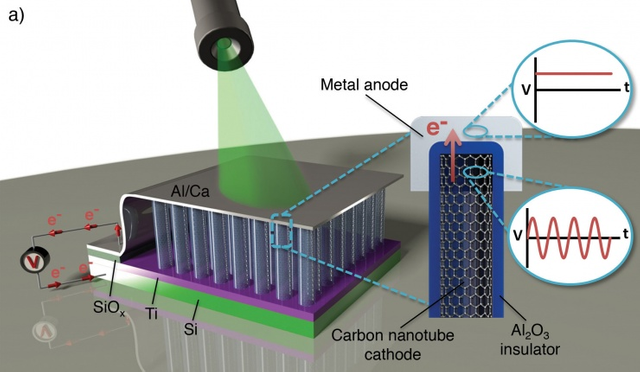
Hot electrons easily crossed the Schottky barrier, creating a photocurrent, that is, something similar to a photodiode. The height of the Schottky barrier made it possible to detect a range considerably exceeding the capabilities of the silicon elements, but the achieved efficiency was only 1%.
In 2013, Brian Willis, a scientist from the University of Connecticut, USA, conducted a successful study and mastered the technology of atomic-layer deposition. He also created an array of rectifying nanoantennes, but after the cutting of the electrodes with an electron beam gun, the scientist covered both electrodes with copper atoms, using atomic-layer deposition to bring the accuracy to distances up to 1.5 nm.
As a result, a small distance created a tunnel transition so that the electrons could simply slip between the two electrodes under the influence of light, creating conditions for further current generation. This research continues, and the expected efficiency can reach 70%.
modeling of nano-antennas from graphene
In the same 2013, researchers from the Georgia Institute of Technology, USA, simulated nano-antennas from graphene. The goal here was to get antennas for data exchange and networking for mobile devices. The key point is the use of surface electronic waves on the surface of graphene, which arise under certain conditions.
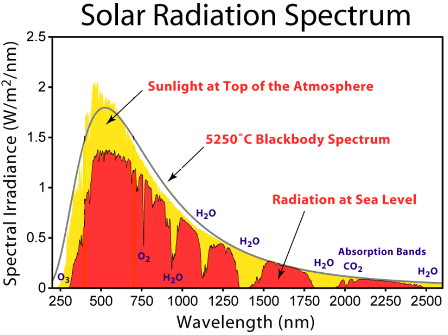
The distribution of electrons in graphene has its own peculiarities, so a small graphene-based antenna is able to emit and receive at a relatively low frequency, but with smaller dimensions than a metal antenna. For this reason, Professor Ian Akyildiz pursues in this study exactly the goal of creating a new way of organizing wireless communications, rather than building solar cells.
Electrons of graphene under the influence of an incoming electromagnetic wave begin to emit waves that propagate exclusively over the surface of graphene, a phenomenon known as a surface plasmon-polarized wave (SPP-wave), and allows the construction of antennas for a frequency range from 0.1 to 10 Terahertz.
In combination with transmitters based on zinc oxide, where piezoelectric properties of these materials are used, a basis for wireless communication with low energy consumption is built, with a predicted 100 times the data transfer rate than existing wireless technologies.
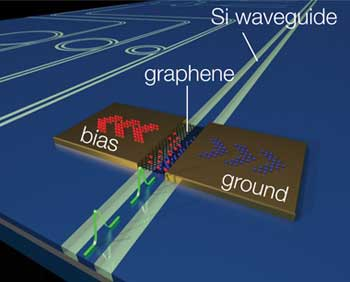
In turn, scientists from the St. Petersburg Metamaterials laboratory in 2013 published an article "Optical nano-antennas", which showed the possibilities of using optical nano-antennas for various purposes, including the transmission and processing of information at speeds much higher than the current ones, because the photon is faster than electron, and this opens up fundamentally new directions.
The senior research fellow of the laboratory, Alexander Krasnok, is sure that 5 millimeter chips processing to a terabit of data in one second is just the beginning, and in the 21st century a real photon revolution awaits us.
Undoubtedly, scientists do not ignore the use of nano-antennas in other areas, such as medicine and energy. In an extensive publication of the authors in the journal Uspekhi Fizicheskikh Nauk (June 2013, Vol. 183, No. 6), an exhaustive survey of nano-antennas is given.
The economic effect from the introduction of nano-antennas is expected to be enormous. So, for example, in comparison with silicon photocells, the cost of one square meter of materials for nanoantennes is two orders of magnitude lower (silicon - $ 1000, alternative - $ 5 to $ 10).
It is possible to say with certainty that in the future, nano-antennas will be able to power electric cars, charge mobile phones, supply electricity at home, and silicon solar cells used today will become a relic of the past.

References for Text and Images:
- https://mechanical.illinois.edu/news/researchers-demonstrate-novel-tunable-nanoantennas
- http://www.sci-news.com/physics/optical-nanoantenna-graphics-gaming-consoles-pcs-05059.html
- http://physicsworld.com/cws/article/news/2011/may/05/nano-antenna-fashions-charge-from-light
- https://www.osa-opn.org/home/articles/volume_26/june_2015/features/plasmonic_nanoantennas_from_nanotweezers_to_plasmo/
- http://forums.nicoclub.com/get-on-the-optical-bus-possible-future-for-computing-t508337.html
- http://physicsworld.com/cws/article/news/2011/may/05/nano-antenna-fashions-charge-from-light
- http://physicsworld.com/cws/article/news/2012/sep/28/survival-of-the-fittest-nanoantenna
steemSTEM
Want to discover more science and technology related content on Steemit? Follow @steemSTEM to see a weekly selection of quality science posts, as well as STEM-related contests. Are you interested in writing posts on related topics yourself? Make sure to join the steemSTEM channel on steemit.chat to engage with other scientists on steemit!

This post has received a 0.28 % upvote from @booster thanks to: @pario.
This post has received a 0.72% upvote from thanks to: @pario.
thanks to: @pario.
For more information, click here!!!!
Send minimum 0.100 SBD to bid for votes.
Do you know, you can also earn daily passive income simply by delegating your Steem Power to @minnowhelper by clicking following links: 10SP, 100SP, 500SP, 1000SP or Another amount. (10 SP minimum)
Greetings! I am a minnow exclusive bot that gives a 5X upvote!
I recommend this amazing guide on how to be a steemit rockstar!
I was made by @EarthNation to make Steemit easier and more rewarding for minnows.